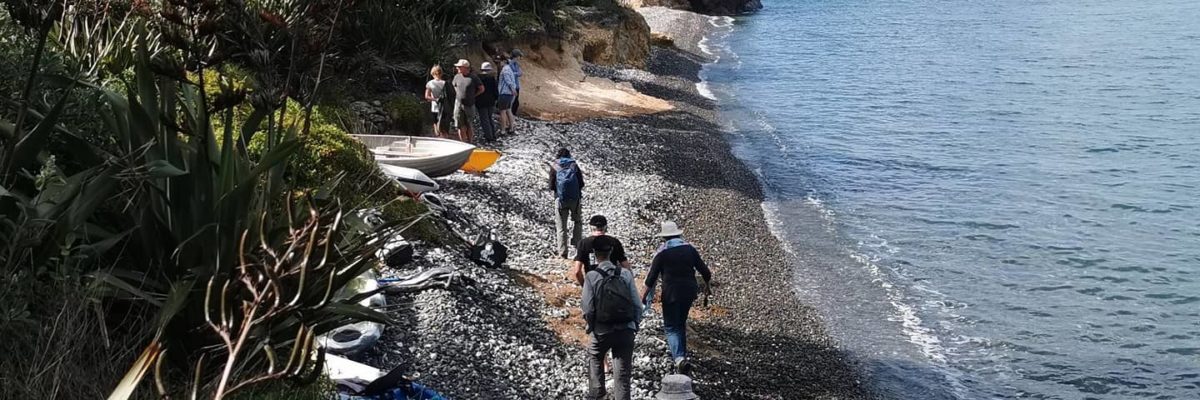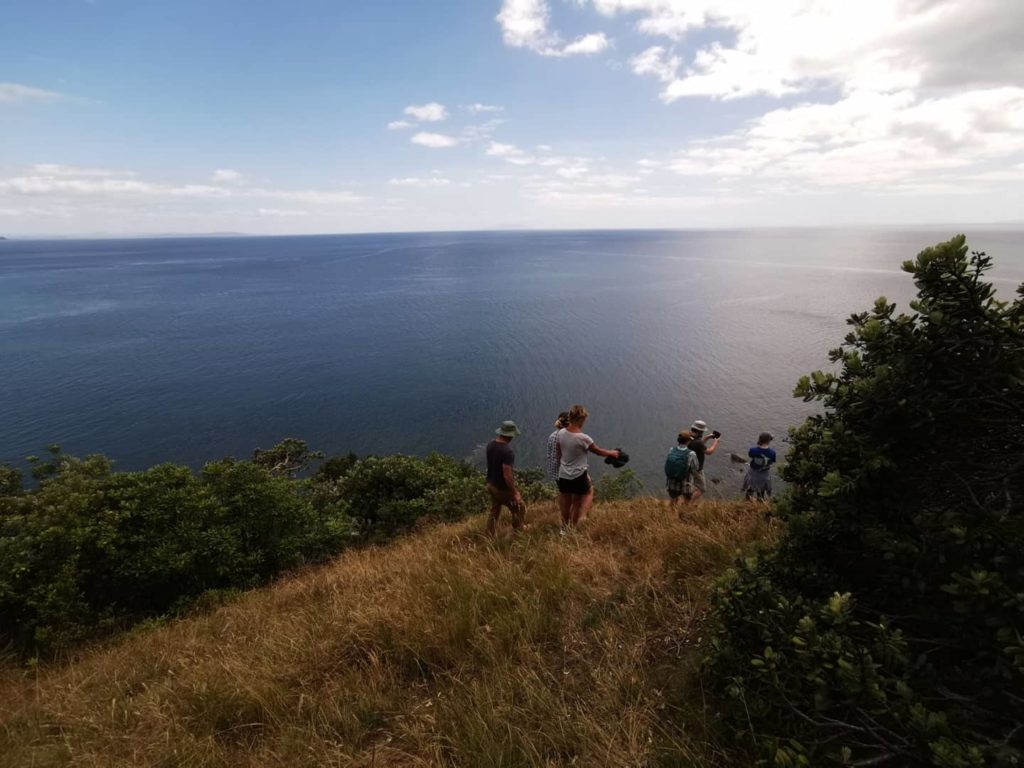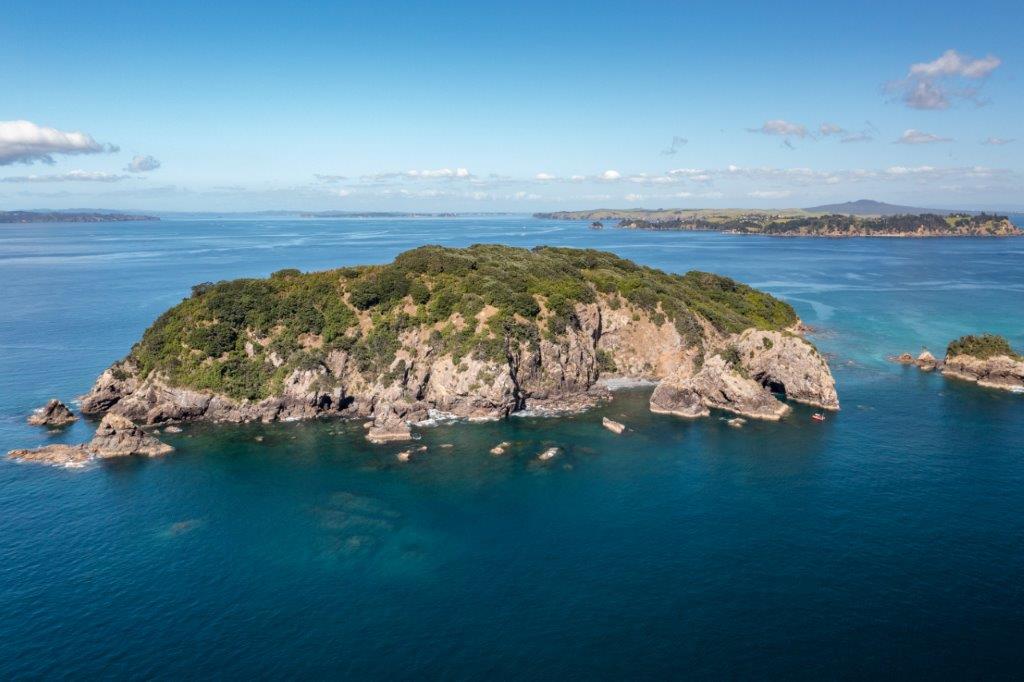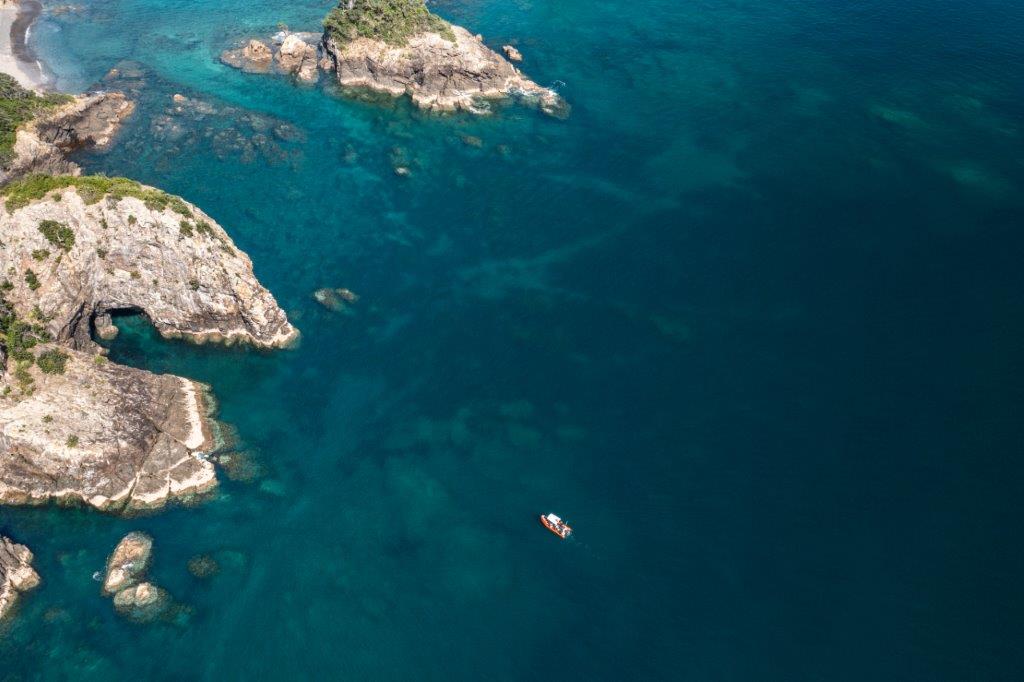The Noises hold a very special interest for seabird lovers. Being home to at least…

New Zealand’s oldest research institution brings its long-term thinking to The Noises
Nurturing and protecting the whenua is a responsibility many New Zealanders can relate to, particularly with increasing awareness of New Zealand’s Predator Free 2050 goal. However, the challenge we all share now is how to offer our moana that same care and action.
The Neureuter family’s efforts to protect the marine environment surrounding The Noises islands has gained significant momentum since 2014 when they became involved with SeaChange: Tai Timu Tai Pari – the Government’s marine spatial plan for The Hauraki Gulf, Tīkapa Moana, Te Moana-nui-ā-Toi. It’s is a big job for just one family, even with critical support from iwi, friends and wider whānau so, to give the Neureuters a hand and put some institutional might behind the mahi, in 2019 The Noises Trust formed an exciting partnership with Tāmaki Paenga Hira, Auckland War Memorial Museum to purposefully advance marine protection.
The Museum is an ideal partner because, since the late 19th century, the curators have made extensive observations on both land and sea, which means today they are well-informed about the islands’ history and how they have changed over time. The project will benefit from this extensive scientific knowledge of the past and current state of The Noises and, more broadly, the Hauraki Gulf. Additionally, the Museum has a long-standing relationship with the Neureuter family and strong iwi connections that will complement the networks already established by the family’s advocacy work to date.
The Museum is also a good fit for this project because they are a globally recognised institution with a long history of advocating for conservation going back as far as 1895 when it was instrumental in petitioning the government of the day to gazette Te Hauturu-o-Toi/Little Barrier Island as a nature reserve, making it one of Aotearoa’s first conservation success stories. For the first 10 years, Hauturu-o-Toi was managed by Auckland Museum, well before the Crown took responsibility as caretakers, and because they’re not aligned to any political or government agency, the Museum’s independence gives them integrity in managing expectations and, unlike many decision-making entities, they have no interests in exploitation.
A trusted voice in the community, the Museum can bring considerable institutional authority to the family’s aspirations. “By using our network of stakeholders, the Museum can assist the family with brokering future relationships” explains Dr Thomas (Tom) Trnski, Head of Natural Sciences at Auckland Museum. “Strength will be increased through these relationships because collectively, a combination of organisations is more powerful for influencing decision-makers than any one group might be individually. We are committed at an Executive and Trust Board level to supporting this project with all our expertise and, by actively prioritising The Noises we hope the project can help reverse some of the deterioration to biodiversity by improving ecosystem health. We also want to support the family by elevating the mana of the whole project and all the partners.”
“The project is strengthened by the diversity of people involved and, because no one holds all the knowledge, a collective of different partners has been formed. The family has long-term memory and historical knowledge. They’ve tracked change through time. The University of Auckland [also partners in the project] has experts on several fronts and the Museum has a long history in conservation, with our special collections dating back to the 19th century.”
The Project aims to be an important exemplar of place-based collaborative decision-making that will address resource protection and management. Key to the work is the development of a comprehensive 50-year ecological monitoring plan that will build on existing biological data, field surveys and Museum collections. This will assess current ecosystem knowledge and provide future researchers with a baseline to quantify change.

Another crucial element will be the development of tohu – or indicators – of change. These tohu will be used to build on scientific knowledge and mātauranga Māori. Adding to the catalogue of tohu, the project will also demonstrate how land and sea are connected, with the intention of moving towards holistic protection and regeneration of the marine environment.
“Holistic protection means that we’re not just looking at component parts or changes in individual species,” Tom explains. “Instead we’re looking at how the whole system functions. We will identify weak links in the chain and find ways to strengthen them. Kina barrens, for example, are a sign of a broken link in the chain, and they are caused by the removal of larger tāmure/snapper and kōura. Using such tohu, or indicators of change, we recognise that humans have broken an ecological link, and now we need to implement change to support the recovery of those links.”
Currently well over a dozen Museum and University staff are actively involved with the partnership, bringing an incredible wealth of knowledge to the table. Dr Dan Hikuroa is instrumental in weaving science and matāuranga Māori, thus incorporating multiple knowledge systems. Dr Nick Shears offers his marine protected area design expertise to the project and Dr Tim Haggitt focuses on marine monitoring methods. Dr Louise Furey, Curator of Archaeology is leading the investigation and conservation of heritage sites. Ewen Cameron, Curator of Botany is looking into botanical diversity and Dr Matt Rayner, Curator of Land Vertebrates is spearheading avian studies. Dr Thomas Trnski, Dr Wilma Blom, Curator of Marine Invertebrates and Severine Hannam, Collection Manager of Marine Fauna are all investigating marine fishes and invertebrates. Auckland Council’s environmental team are also onboard and they are committed to supporting a significant and ongoing seabird study which recently took flight with Dr Gaia Dell’Arriccia at the helm.
The development of a long term, holistic, ecological monitoring plan is ambitious and novel in New Zealand – examples globally are also rare – and The Noises Trust and Museum hope that this work will guide and inspire future initiatives elsewhere.
The Ecological Monitoring Plan will soon be available on the Publications page of The Noises website. The project has been enabled by G.I.F.T, PEW Charitable Trusts, the C&L Gregory Trust, with significant contributions of staff time and support from the partner institutions.



